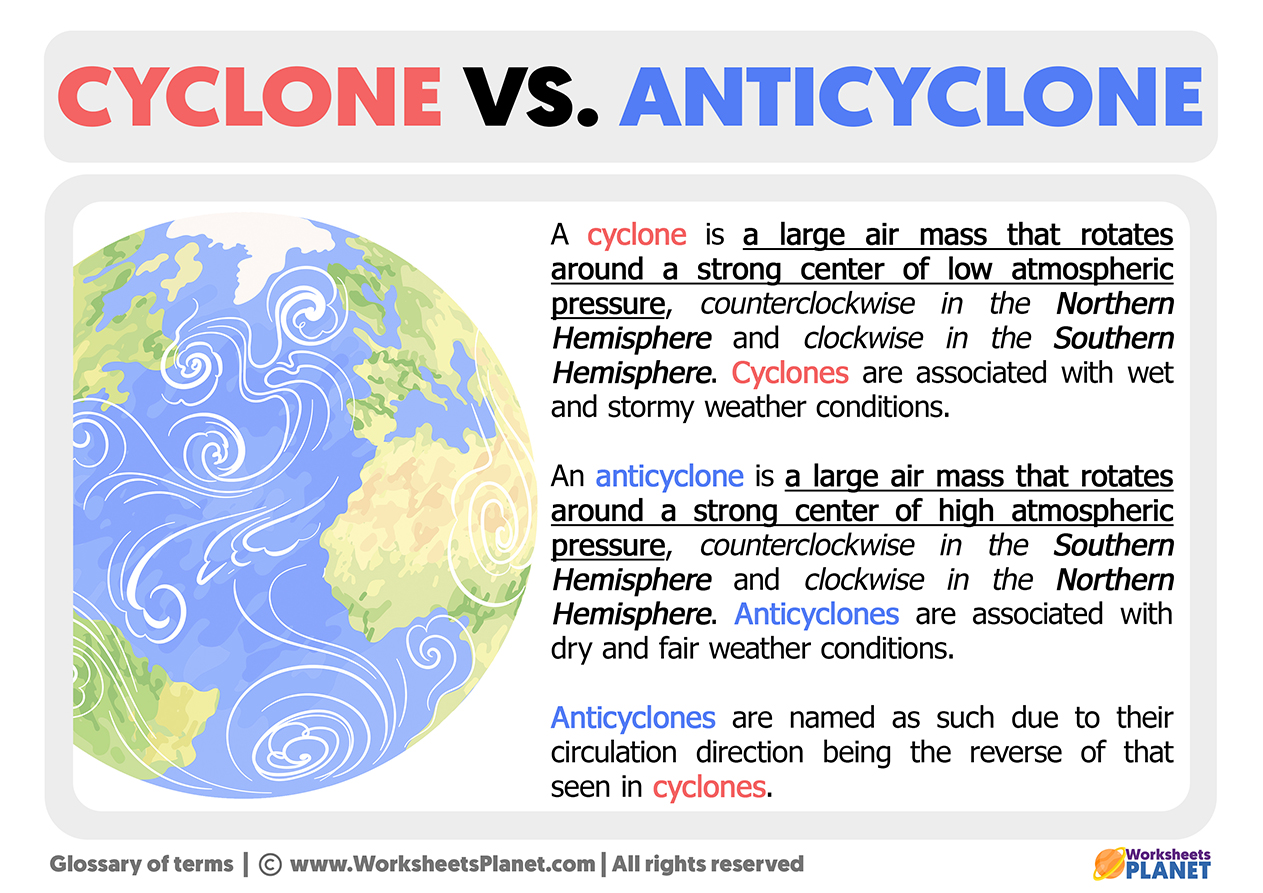Cyclones and anticyclones are two different types of atmospheric pressure systems. Understanding the differences between cyclones and anticyclones can help with predicting weather patterns and potential impacts on climate. Here are the key differences between them:

Direction of air movement
Cyclones are areas of low pressure where air is rising, while anticyclones are areas of high pressure where air is descending.
Wind direction
Cyclones are associated with counterclockwise wind rotation in the Northern Hemisphere and clockwise rotation in the Southern Hemisphere, while anticyclones have clockwise wind rotation in the Northern Hemisphere and counterclockwise rotation in the Southern Hemisphere.
Weather conditions
Cyclones typically bring stormy weather, such as heavy rain, thunderstorms, and high winds, while anticyclones are associated with clear skies, sunshine, and light winds.
Temperature
Cyclones tend to bring cooler temperatures due to the rain and cloud cover, while anticyclones can bring colder or warmer temperatures depending on the season and location.
Movement
Cyclones typically move from west to east, while anticyclones tend to be more stationary or move more slowly.
Geographic distribution
Cyclones are more common in areas near the equator, such as the tropics, while anticyclones are more common in mid-latitude areas, such as the subtropics and polar regions.

